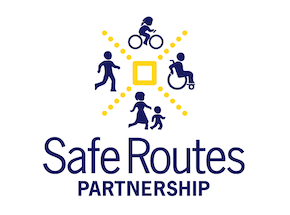We’ve developed state report cards which provide a snapshot of how supportive each state is of walking, bicycling, and physical activity for children and adults as of 2018.
Volunteers are often crucial to the success and sustainability of a Safe Routes to School program. These people give their time and skills to support students and schools.
As more and more people are bicycling in the United States, a bike train can be a strong part of a larger Safe Routes to School program, initiatives that thousands of communities across the nation are establishing.
Walk audits can be informal and casual, or can include city councilmembers, traffic engineers, and detailed forms. In this toolkit, we give you the tools to hold your own walk audit that will help you achieve the goals of your community.
Walking one mile to and from school each day is two-thirds of the recommended daily physical activity for children and youth. This guide will help you create maps of recommended routes for students to walk with their families or in groups.
This report looks at the cost savings and economic benefits of investments in active transportation and Safe Routes to School—including medical cost savings from improving safety, reducing costs of obesity due to increased physical activity, and increases in economic benefits such as increased rents or property values, tourism revenue, and more jobs.
The Bus Stop and Walk (BSW) program drops students a safe and walkable distance from school, allowing them to walk in with the goal of improving physical and mental health, increasing academic performance and building community by dropping students within a walkable distance to school.
An online training for adult school crossing guards in Minnesota.
The Minnesota Safe Routes to School program has partnered with AAA Minnesota-Iowa to offer an online training for school safety patrollers in Minnesota.
This toolkit contains information on building and sustaining a Safe Routes to School task force, structuring and sustaining a paid Safe Routes to School coordinator position, adopting Safe Routes to School policies, and more.

